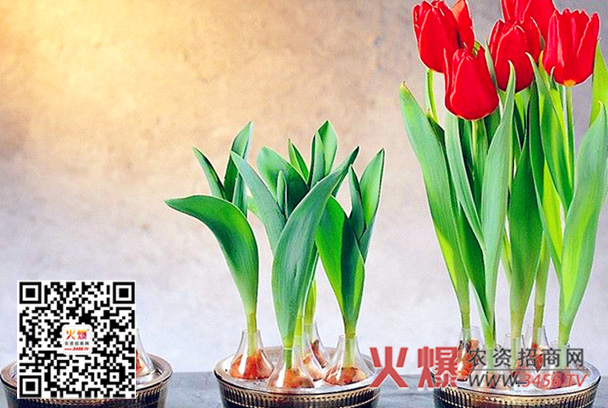Bacterial leaf spot of green radish
[symptoms] at the initial stage of the disease, water-stained necrotic spots appeared on the green radish leaves, and the later diseased spots gradually turned dark brown, and there were often concentric wheel lines and yellow edges on the diseased spots. after the green pineapple was infected by bacterial leaf spot, the ornamental value decreased greatly.
[pathogen and incidence regularity] is a bacterial disease, the pathogen is Pseudomonas chrysanthemum, most of the bacteria survive in the soil and are generally spread by watering and splashing and friction with healthy leaves on the disease mouth. The disease often occurs in the period of hypothermia.
[prevention and control methods]
1. Remove the diseased leaves in time and burn them centrally.
2. Drug prevention and treatment: it can be foliar sprayed with 4% ammonia copper solution, 60% ethyl phosphorus aluminum wettable powder, 77% or 72% agricultural streptomycin wettable powder 4000 times. 0.1% potassium permanganate solution can also be sprayed during family prevention and treatment.
Control of bacterial leaf spot of Rosa verticillata
Green radish bacterial leaf spot is one of the common diseases of green pineapple. It mainly harms the leaves of green radish and affects its ornamental.
Symptoms:
Bacterial leaf spot at first showed a flood-like necrotic spot on the leaf, and then quickly turned dark brown, with bright and dark concentric lines on the spot and yellow halo on the periphery.
Pathogen
The leaf spot disease of Pseudomonascichoric (Swinhle) Stapp is called Pseudomonas chicory, which belongs to bacteria. The mycelium is rod-shaped, with many polar flagella.
Route of infection:
The pathogen of green radish leaf spot survived in the soil, mainly through water droplet sputtering or friction between leaves, the pathogen invaded through wounds or water holes, the suitable temperature was 17-23 degrees, and the disease occurred mostly in low temperature period.
Prevention and control:
one. Cut off the diseased spot or leaf in time at the initial stage of the disease.
two. At the initial stage of adult disease, 350-fold solution of 14% complexing ammonia copper solution was sprayed once every 7 to 10 days, and continuous prevention and treatment was carried out for 2 times.
Control methods of bacterial leaf spot of Rosa verticillata
Green radish bacterial leaf spot is one of the common diseases of green pineapple. It mainly harms the leaves of green radish and affects its ornamental.
Symptomatic bacterial leaf spot initially showed a flood-like necrotic spot on the leaf, and then quickly turned dark brown. There were concentric patterns of light and dark on the spot, and yellow halos on the periphery.
The pathogen of leaf spot disease of Pseudomonascichoric (Swinhle) Stapp is Pseudomonas chicory, which belongs to bacteria. The mycelium is rod-shaped, with many polar flagella.
The pathogen of green roach leaf spot survived in the soil, mainly through water droplet sputtering or friction between leaves, the pathogen invaded through wounds or water holes, and the optimum temperature was 17-23 degrees.
Prevention and cure method
1. In the early stage of the disease, cut off the diseased spot or the diseased leaf in time.
two。 At the initial stage of adult disease, 350-fold solution of 14% complexing ammonia copper solution was sprayed once every 7 to 10 days, and continuous prevention and treatment was carried out for 2 times.
- Prev

Prevention and control of main diseases and insect pests of rhododendron
(1) ① brown spot of rhododendron: it is the main disease of rhododendron. At the beginning of the disease, small brown spots appeared on the leaf surface, and then gradually expanded into large dark brown patches, and many black or grayish brown spots were scattered on the disease spot. The damaged leaves turn yellow and fall off easily, which not only affects the flowering of the same year.
- Next

How do tulips grow in water?
Tulips are also suitable for hydroponic culture, especially for low-temperature treated bulbs, which take a short time from planting to flowering. Hydroponic tulips are well decorated and easy to operate. (1) the diameter of the tulip bulb in the hydroponic container is about 3 to 5 centimeters, and it is best to have a container with a thin middle and two ends wide.
Related
- Fuxing push coffee new agricultural production and marketing class: lack of small-scale processing plants
- Jujube rice field leisure farm deep ploughing Yilan for five years to create a space for organic food and play
- Nongyu Farm-A trial of organic papaya for brave women with advanced technology
- Four points for attention in the prevention and control of diseases and insect pests of edible fungi
- How to add nutrient solution to Edible Fungi
- Is there any good way to control edible fungus mites?
- Open Inoculation Technology of Edible Fungi
- Is there any clever way to use fertilizer for edible fungus in winter?
- What agents are used to kill the pathogens of edible fungi in the mushroom shed?
- Rapid drying of Edible Fungi

